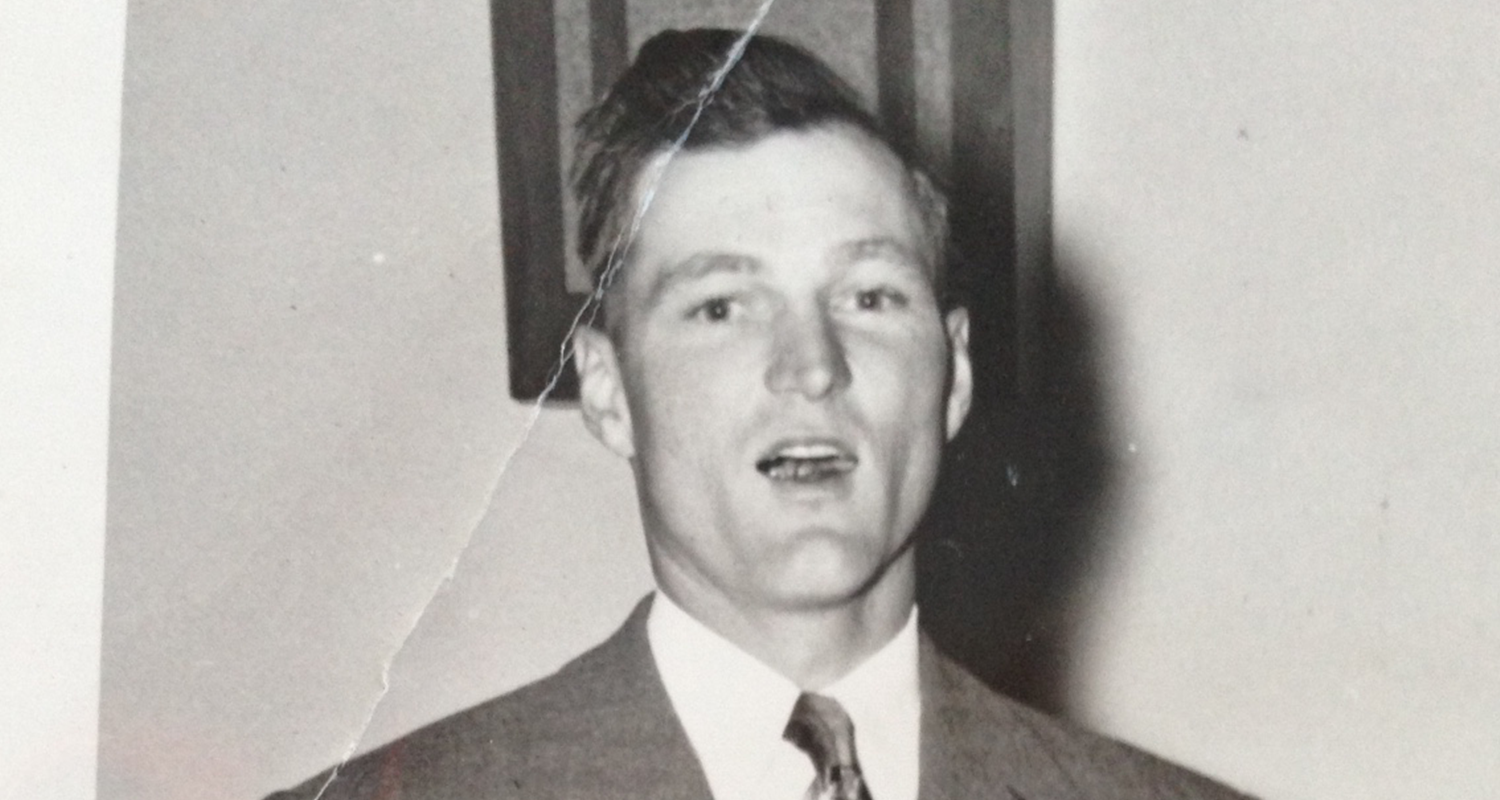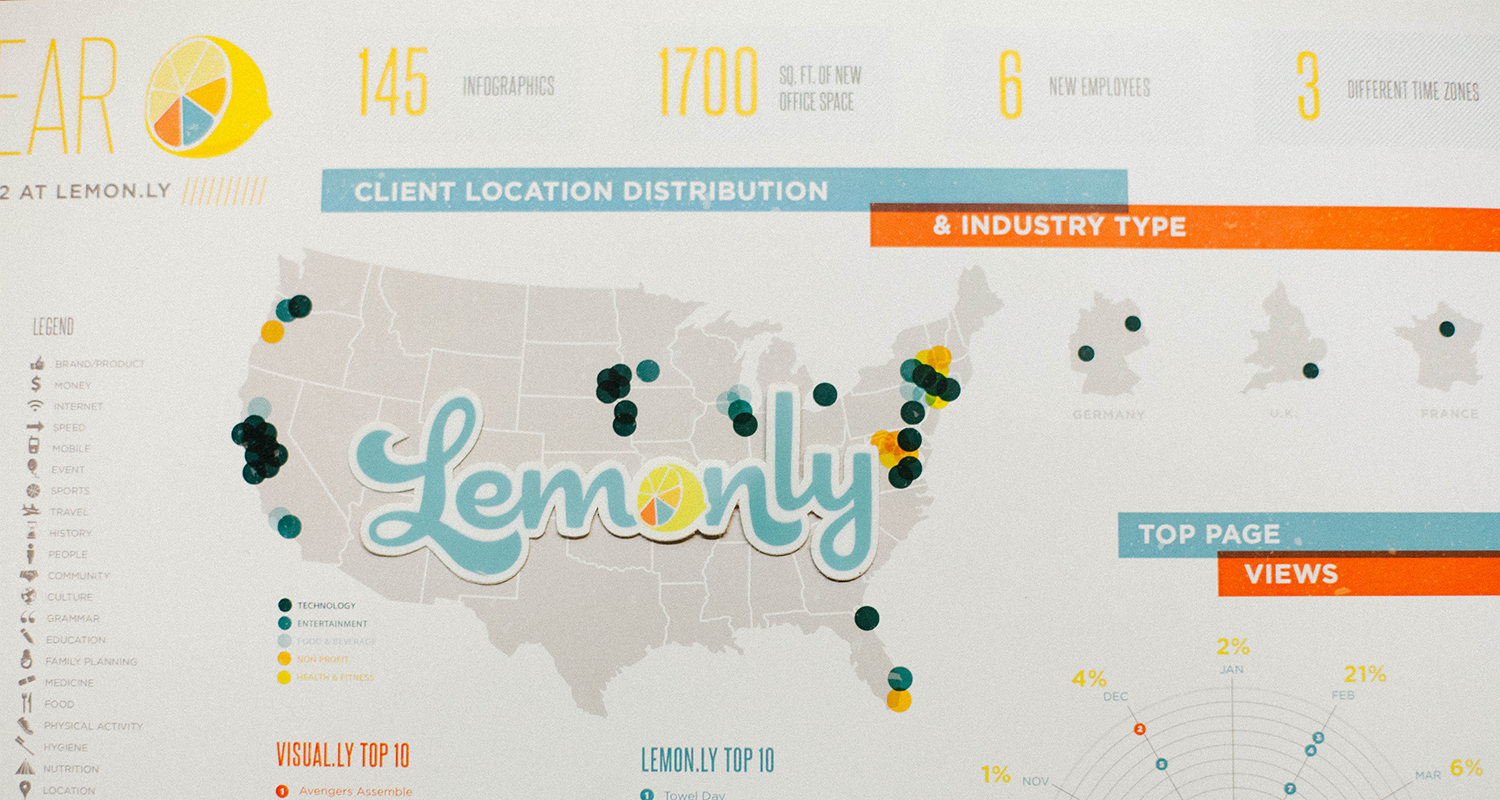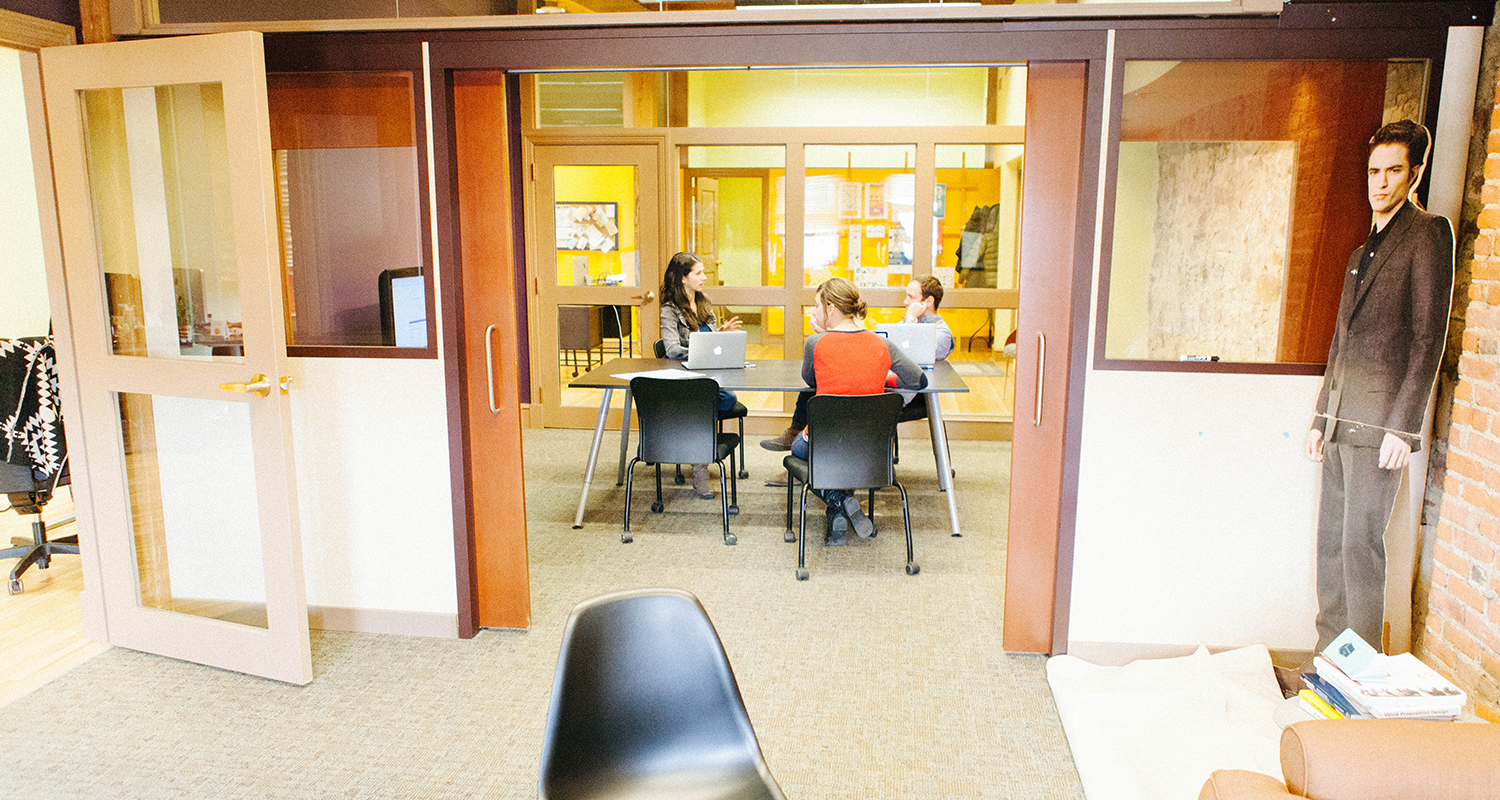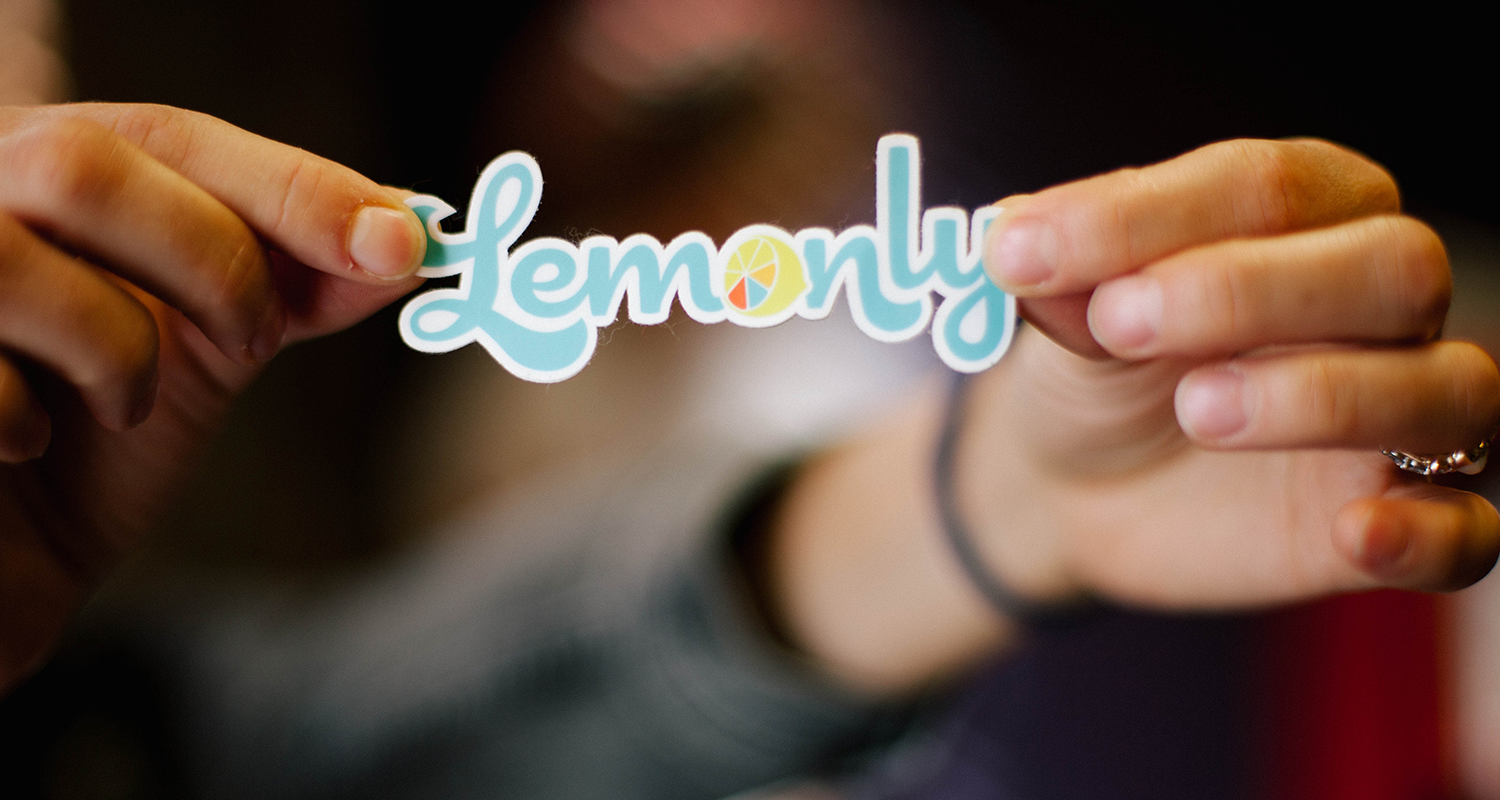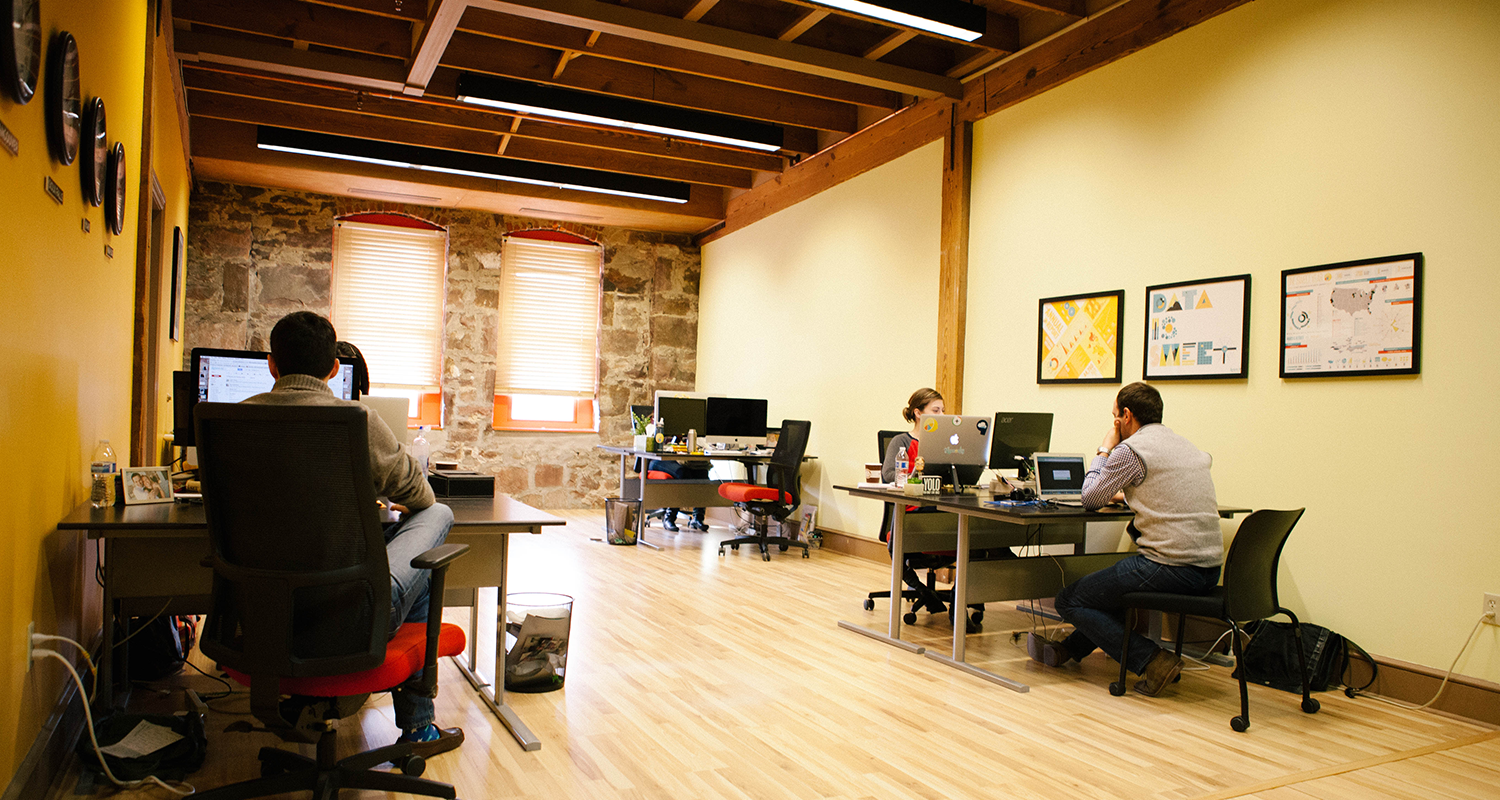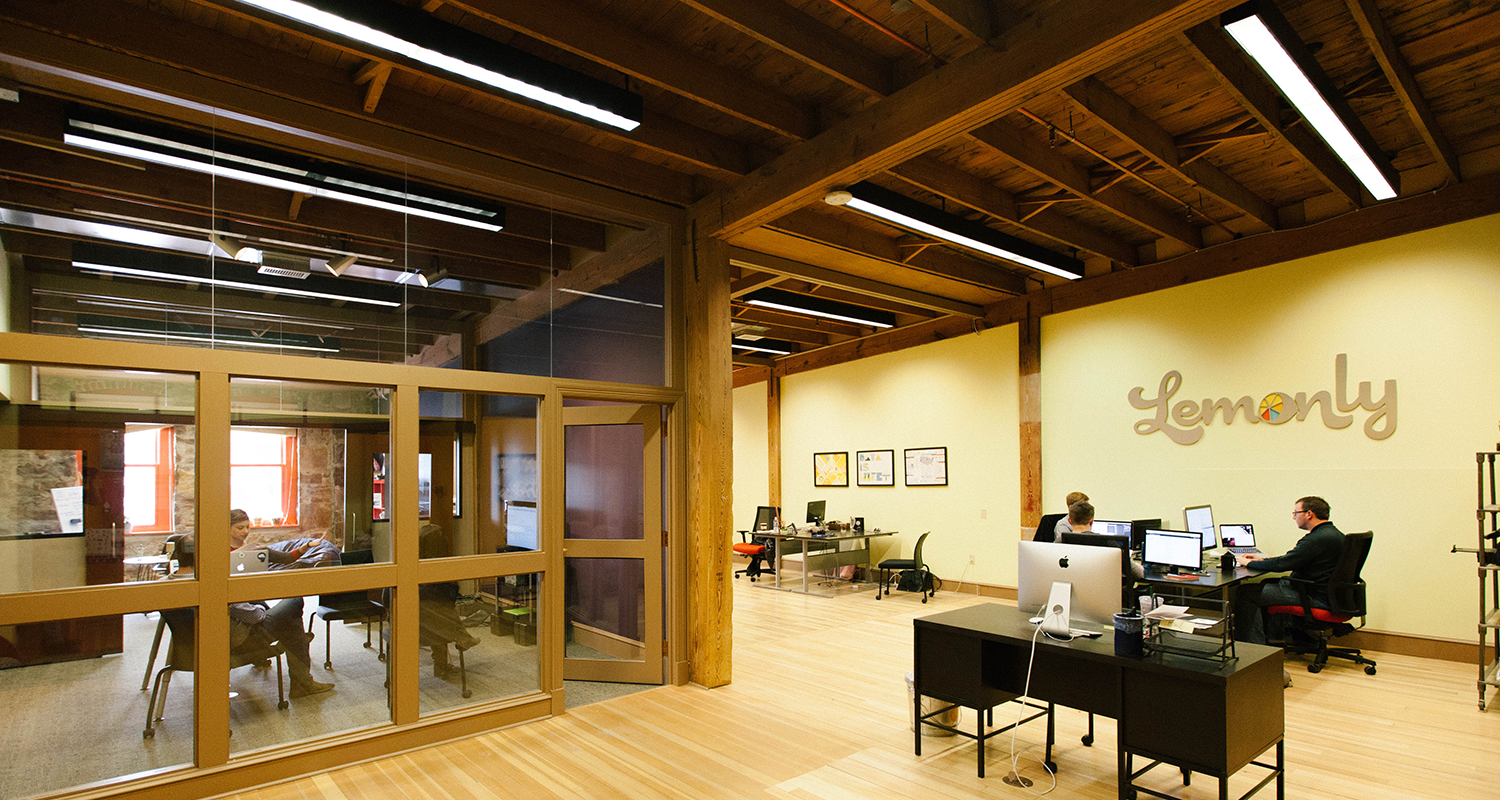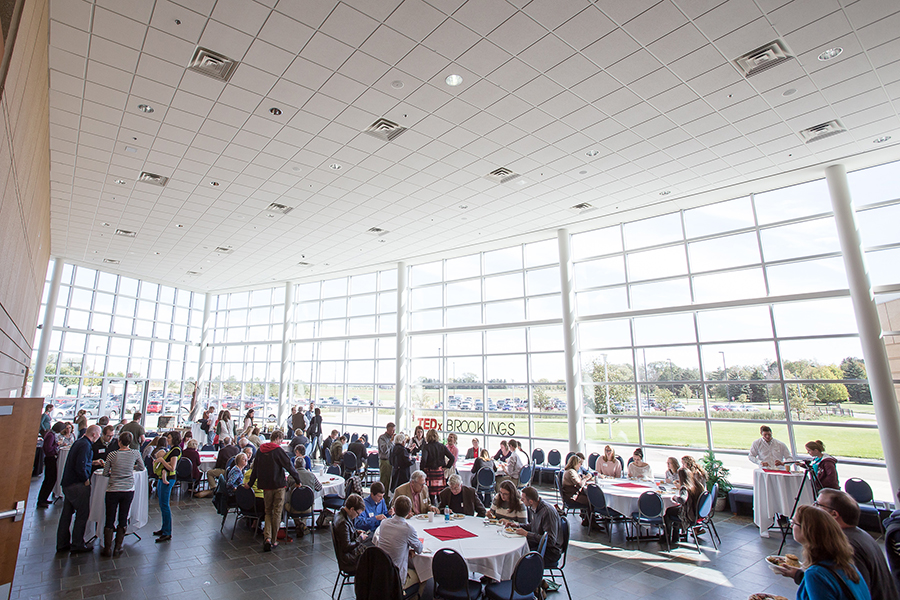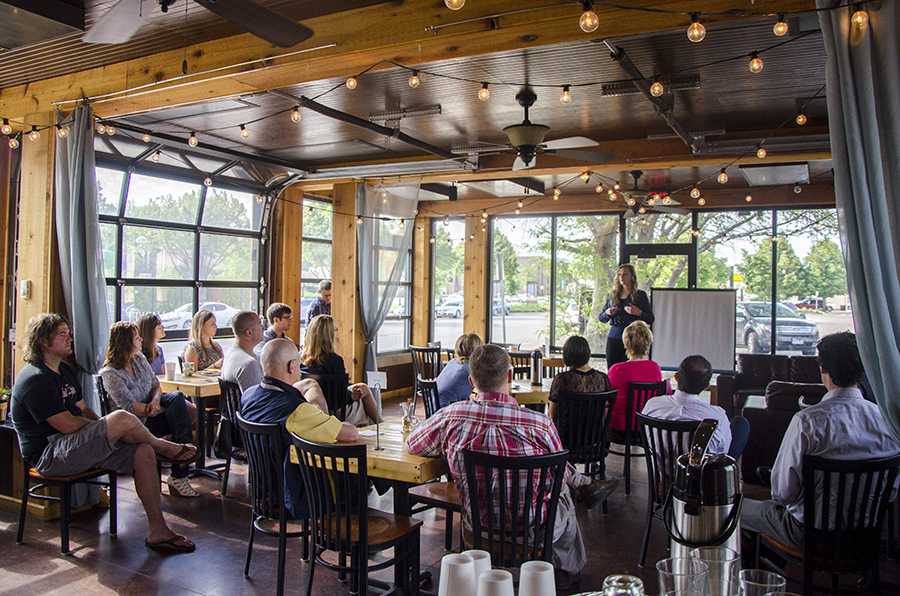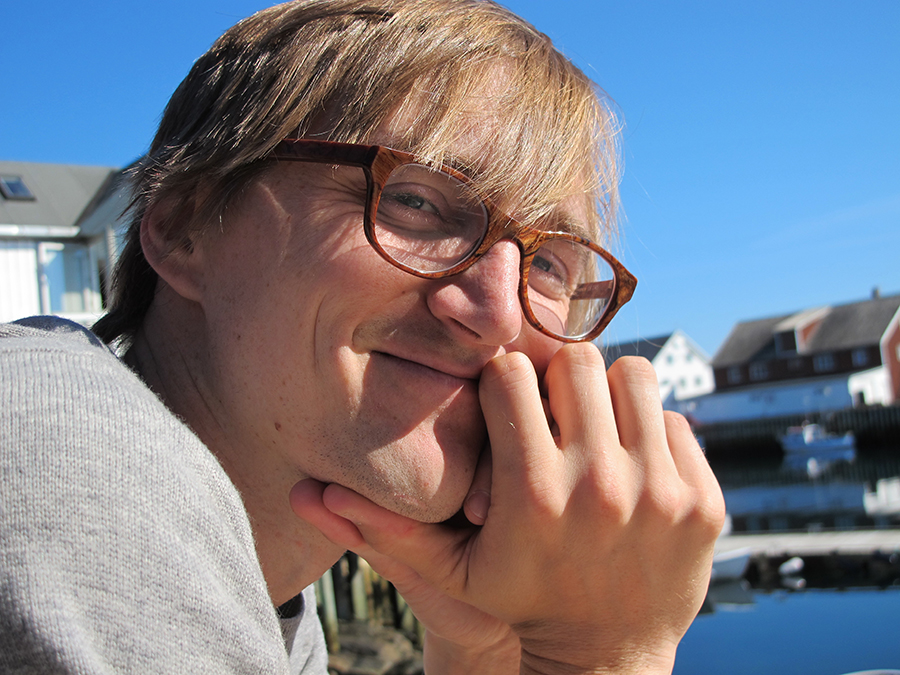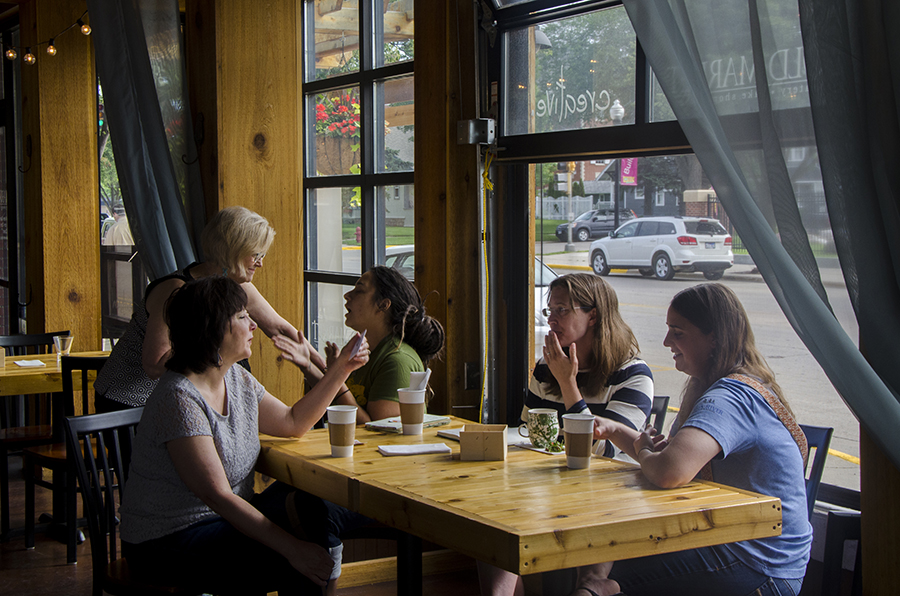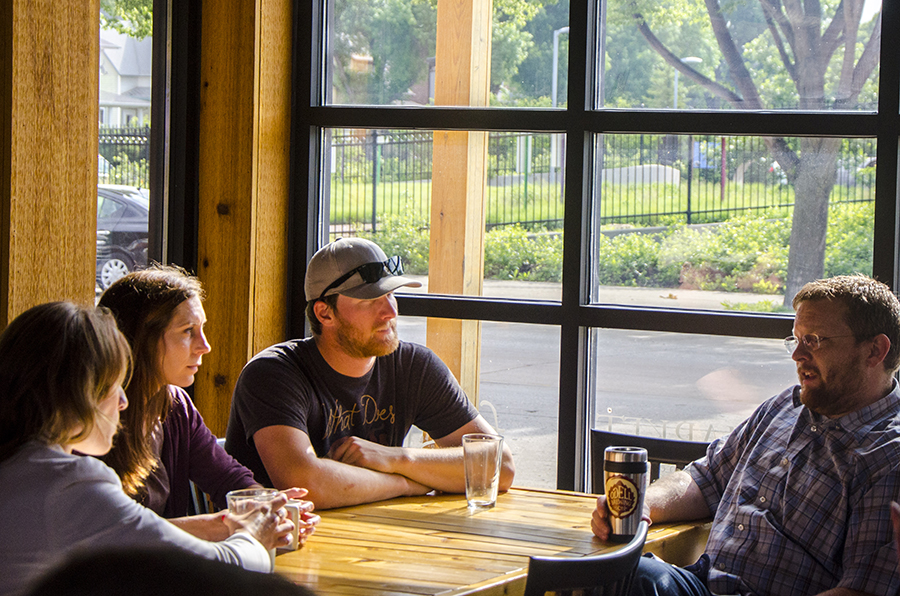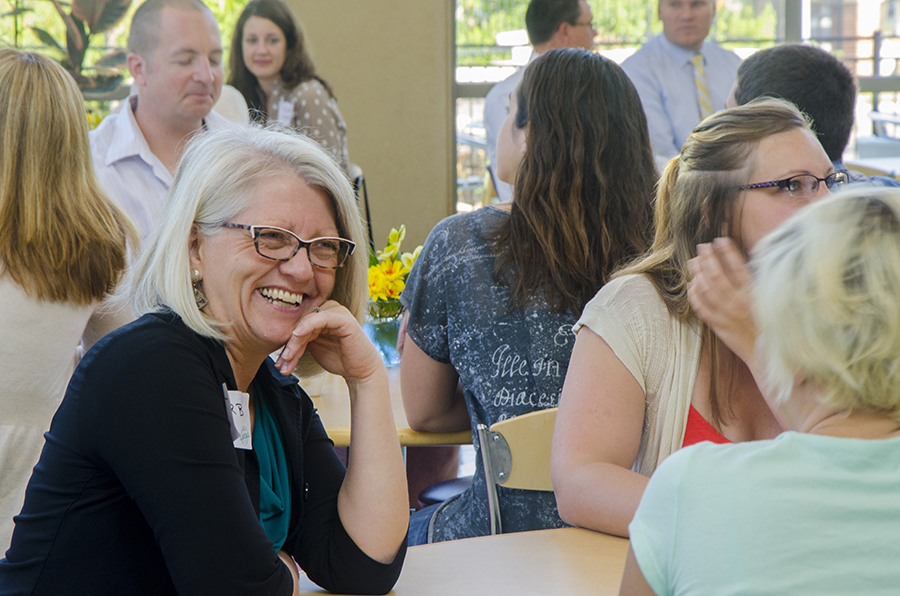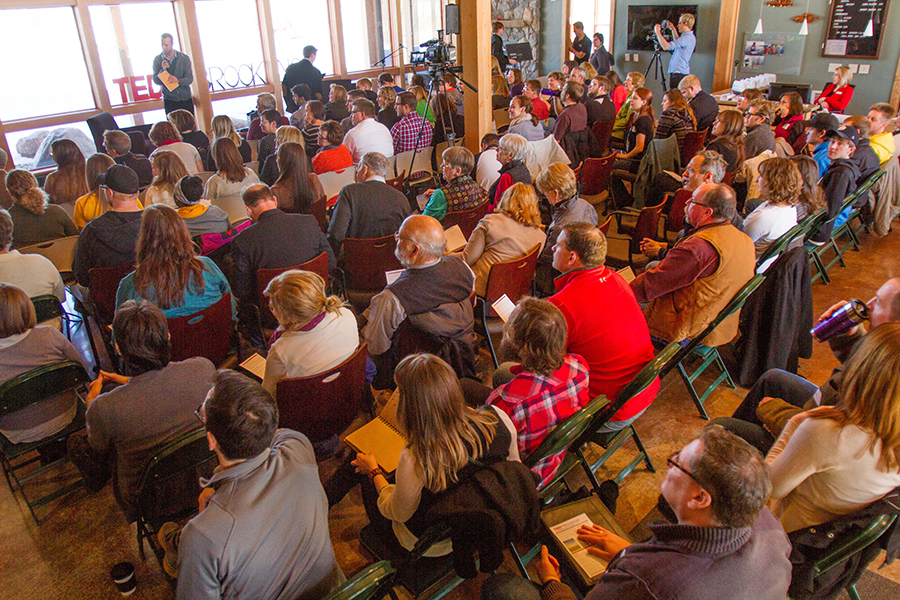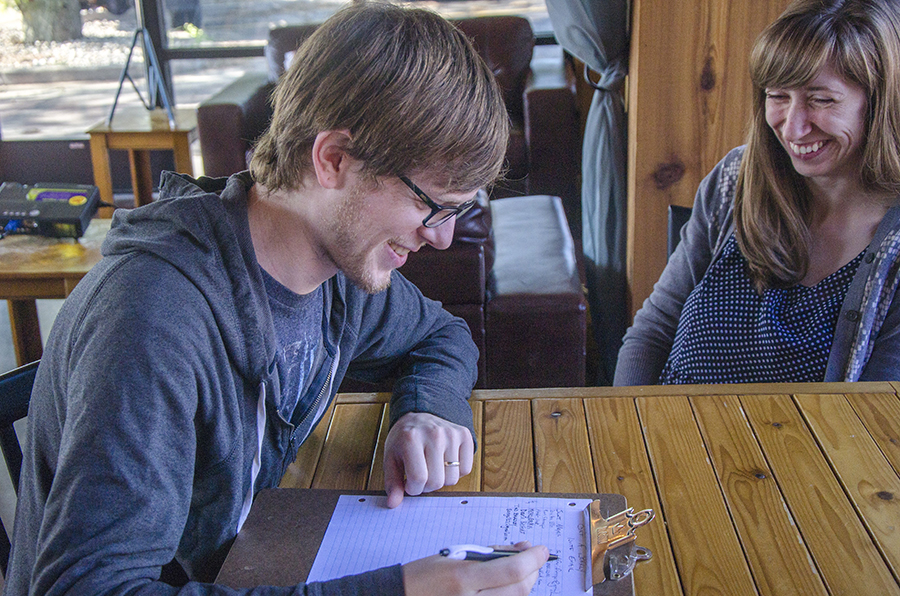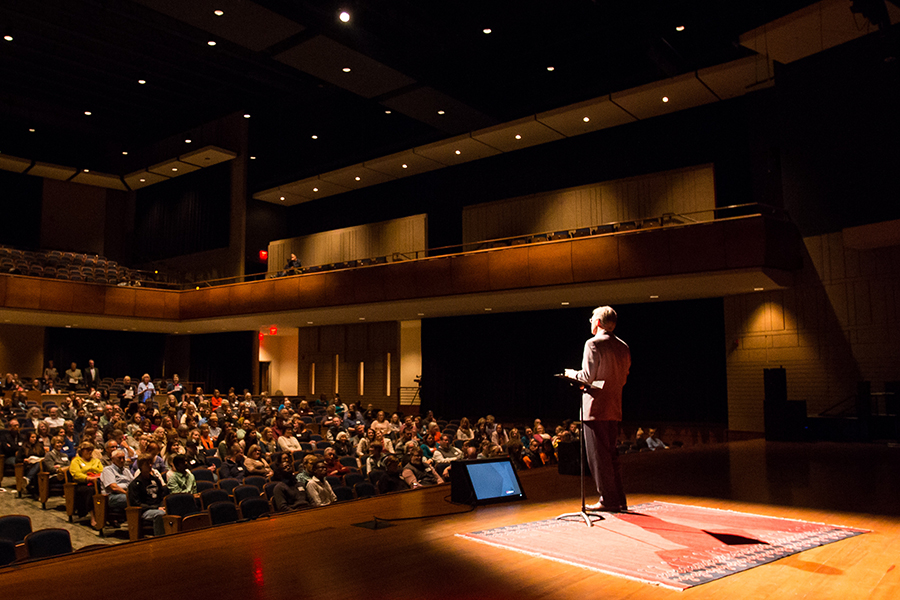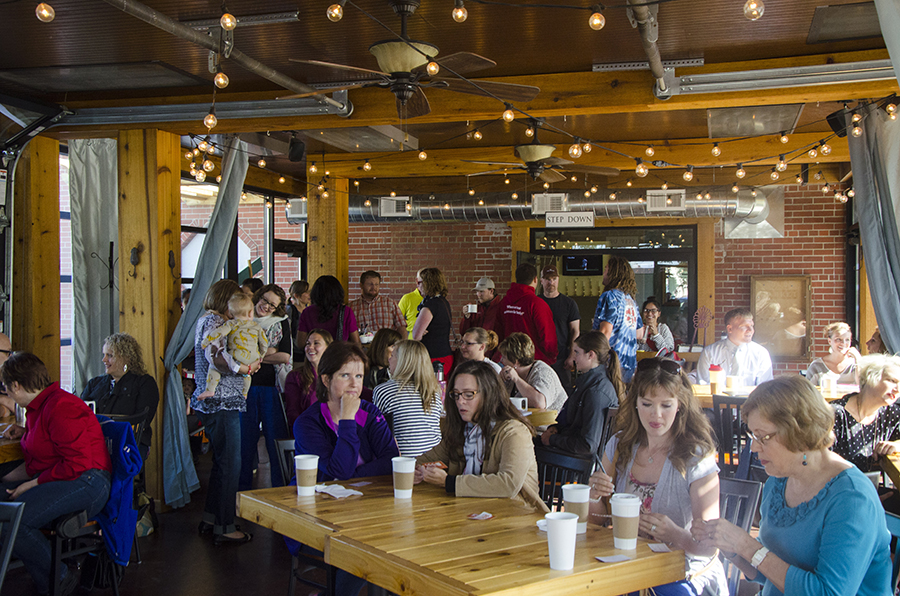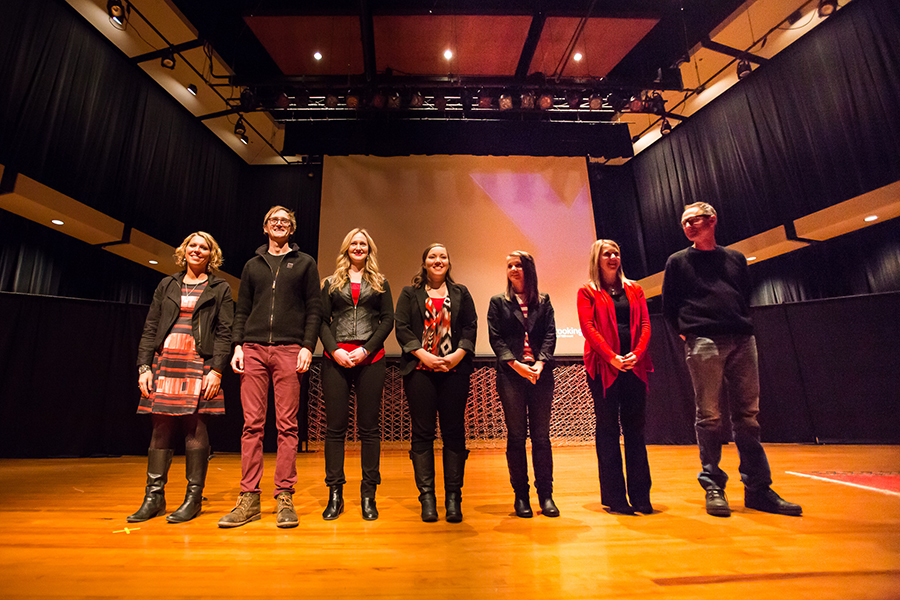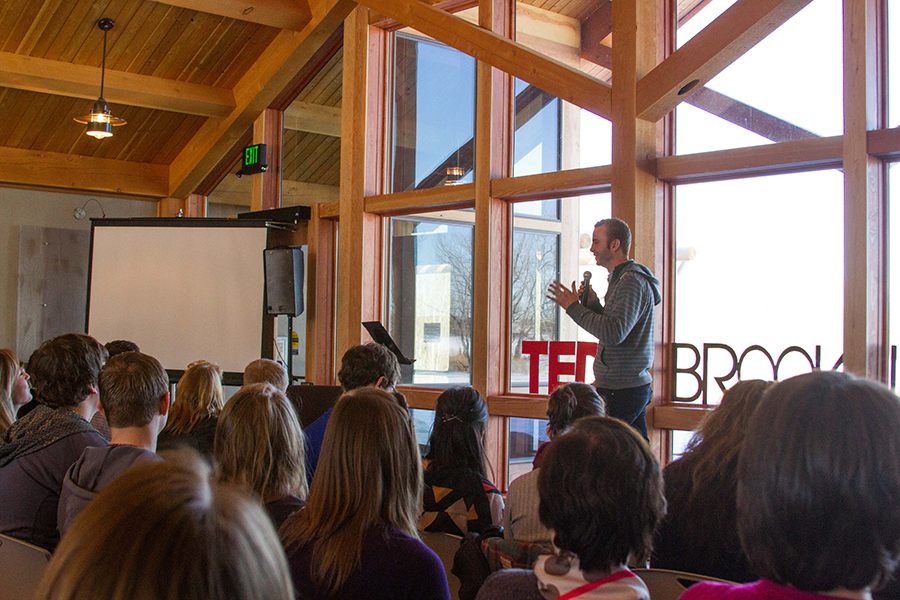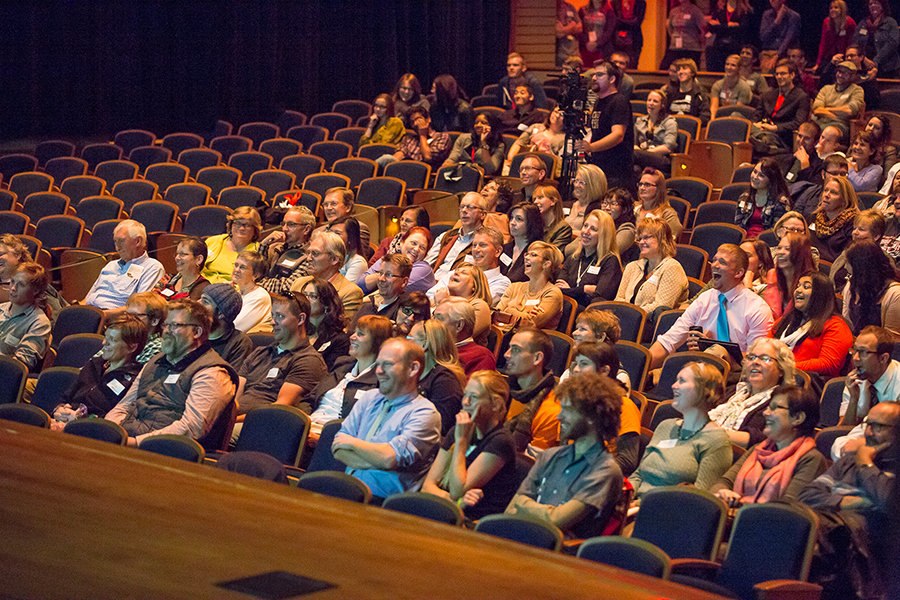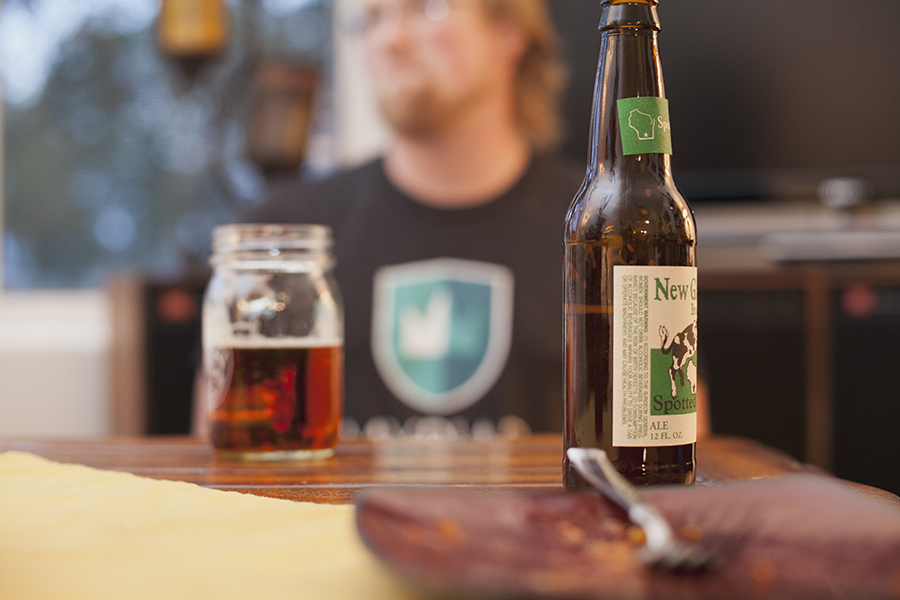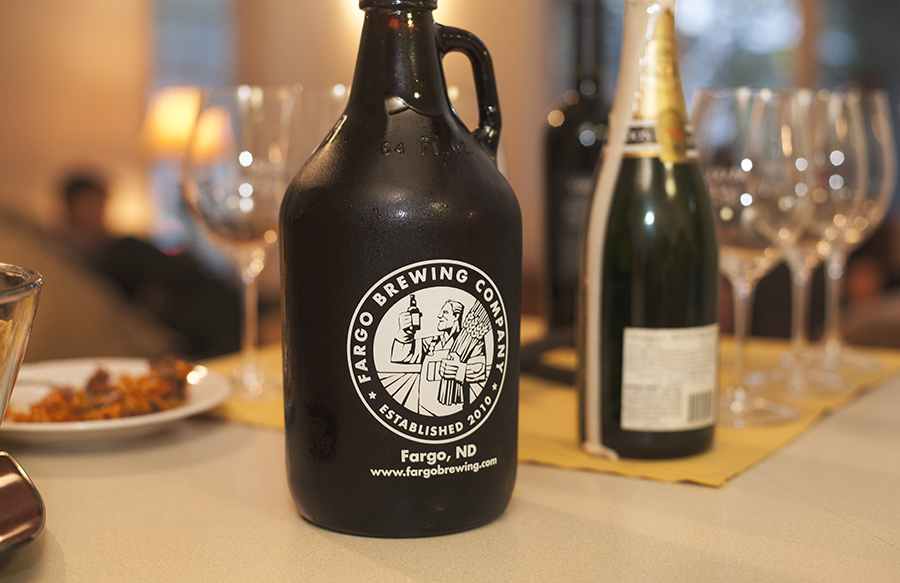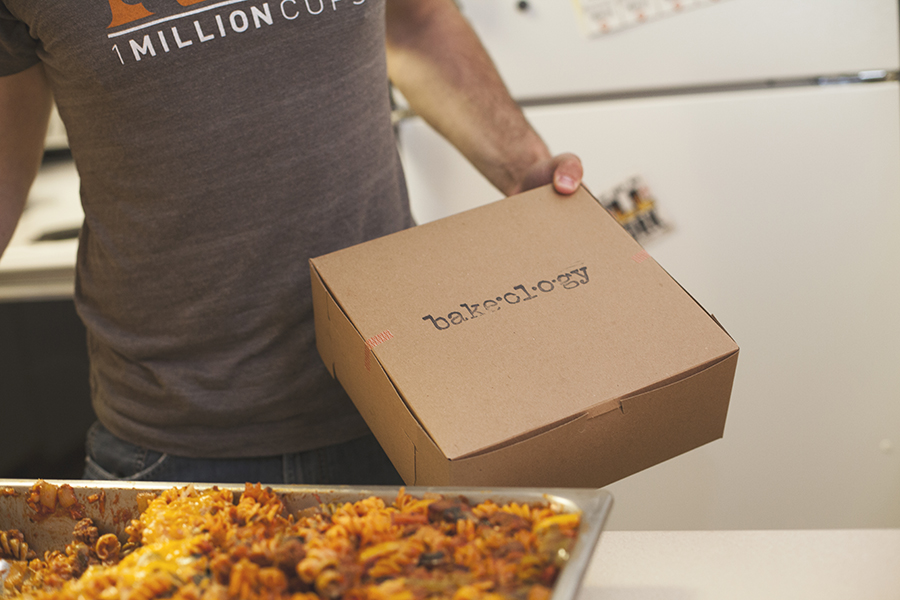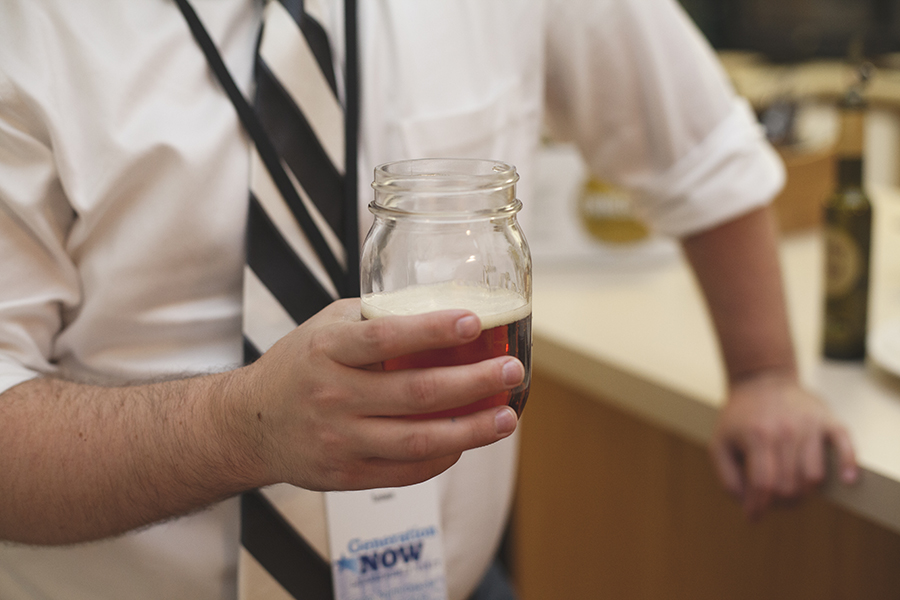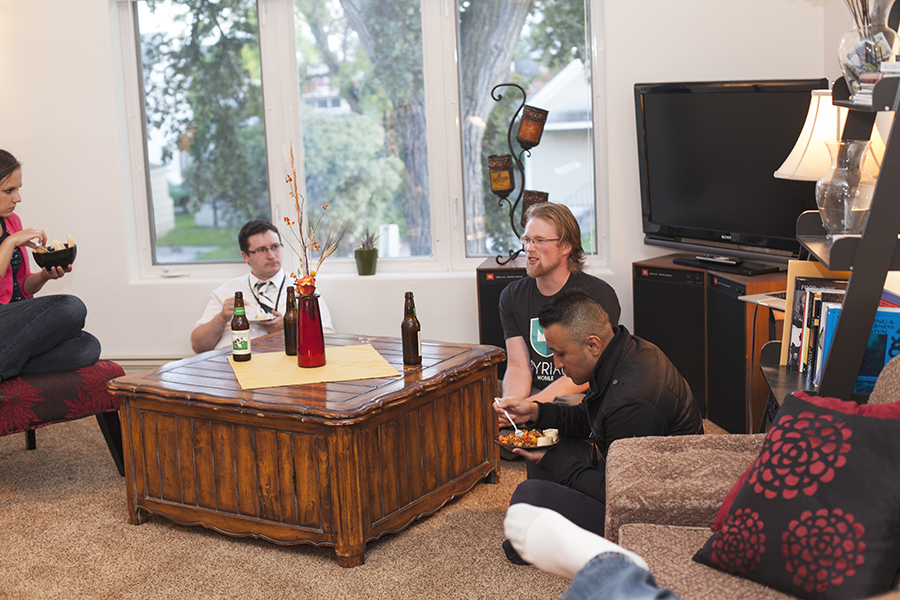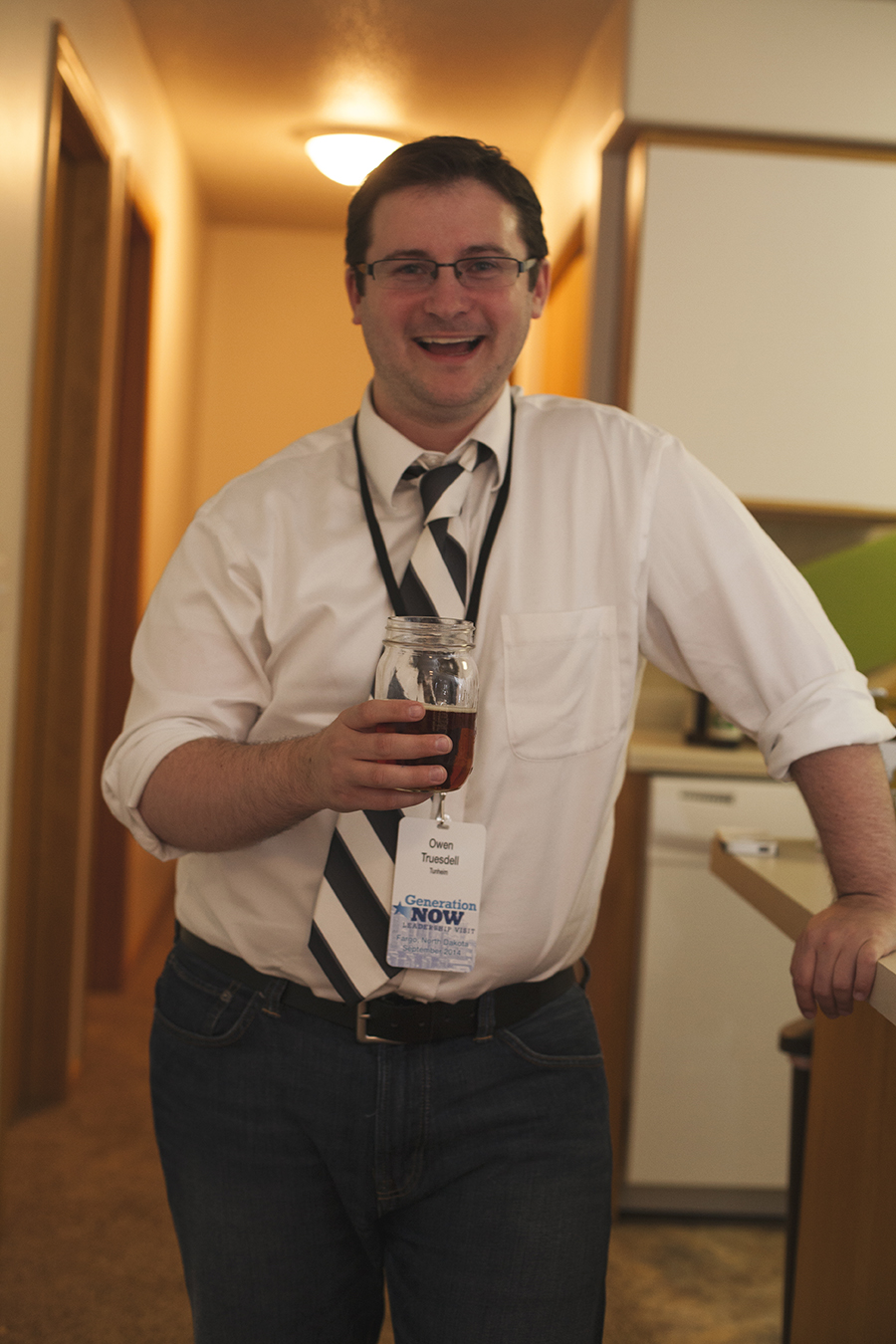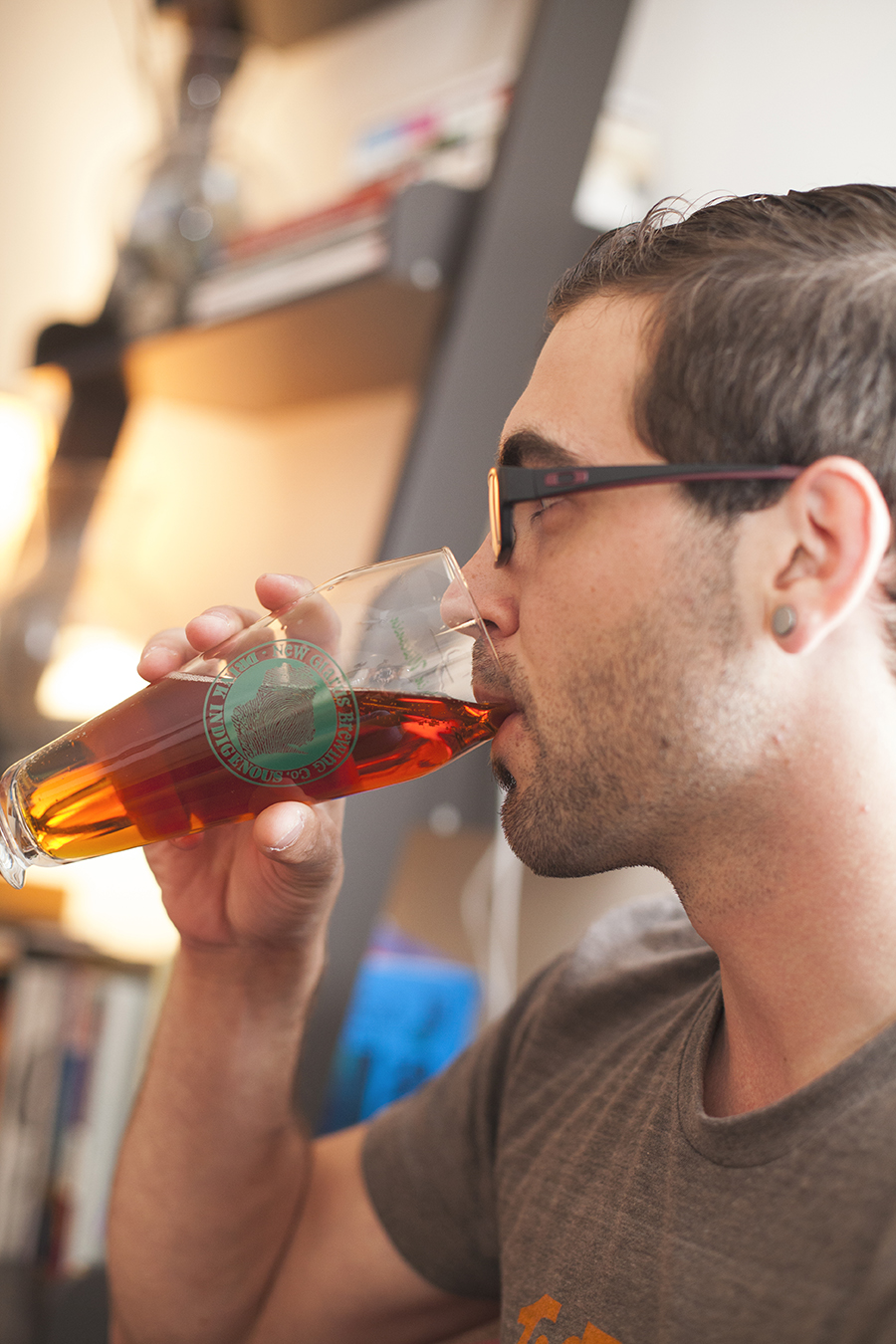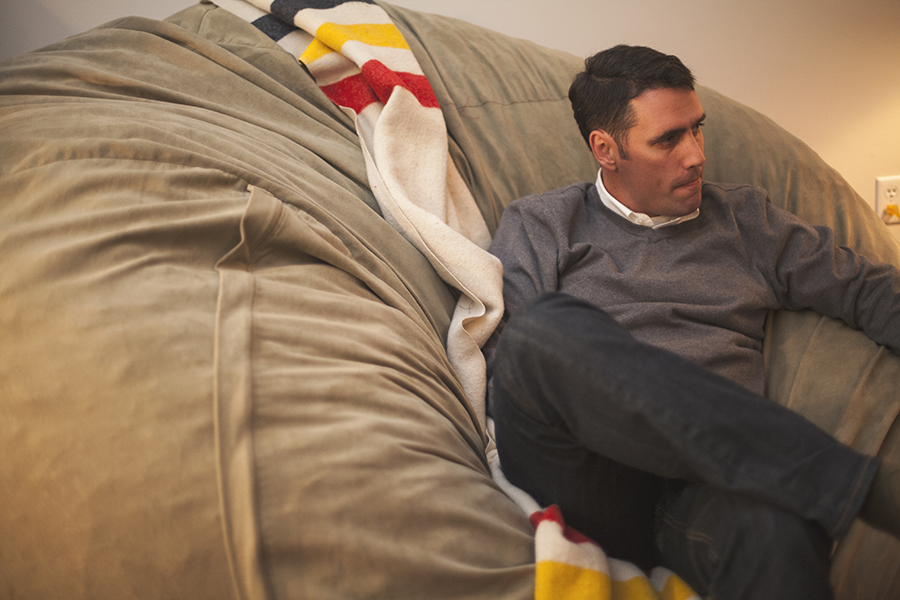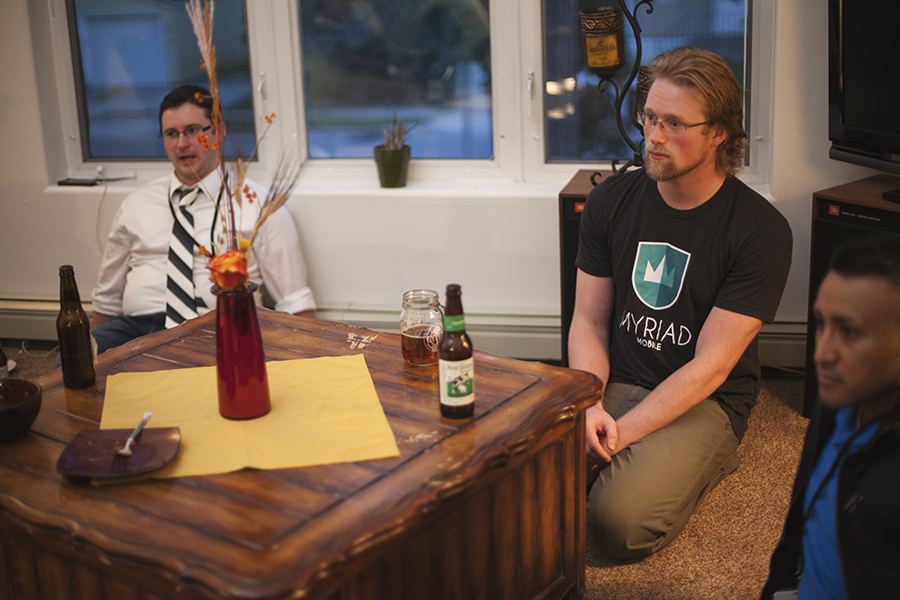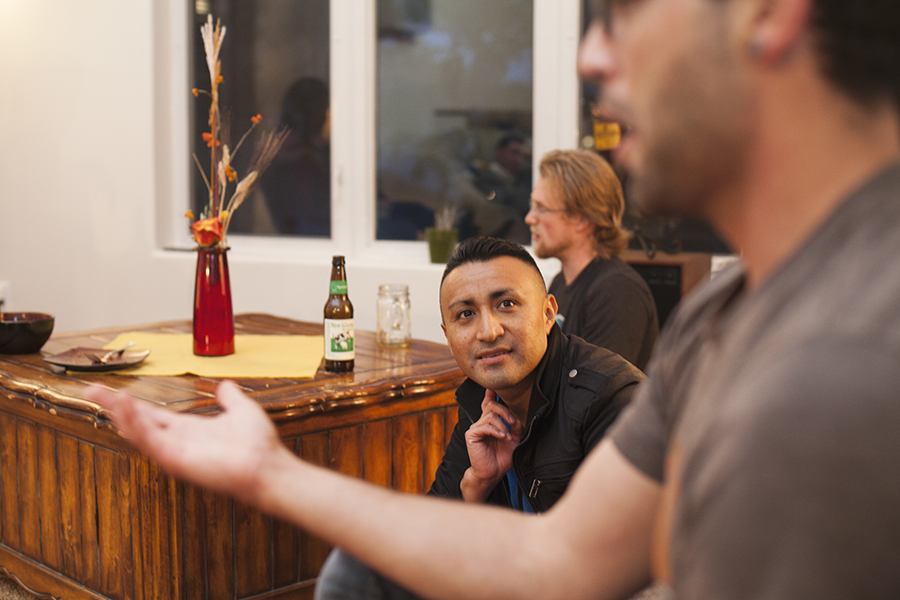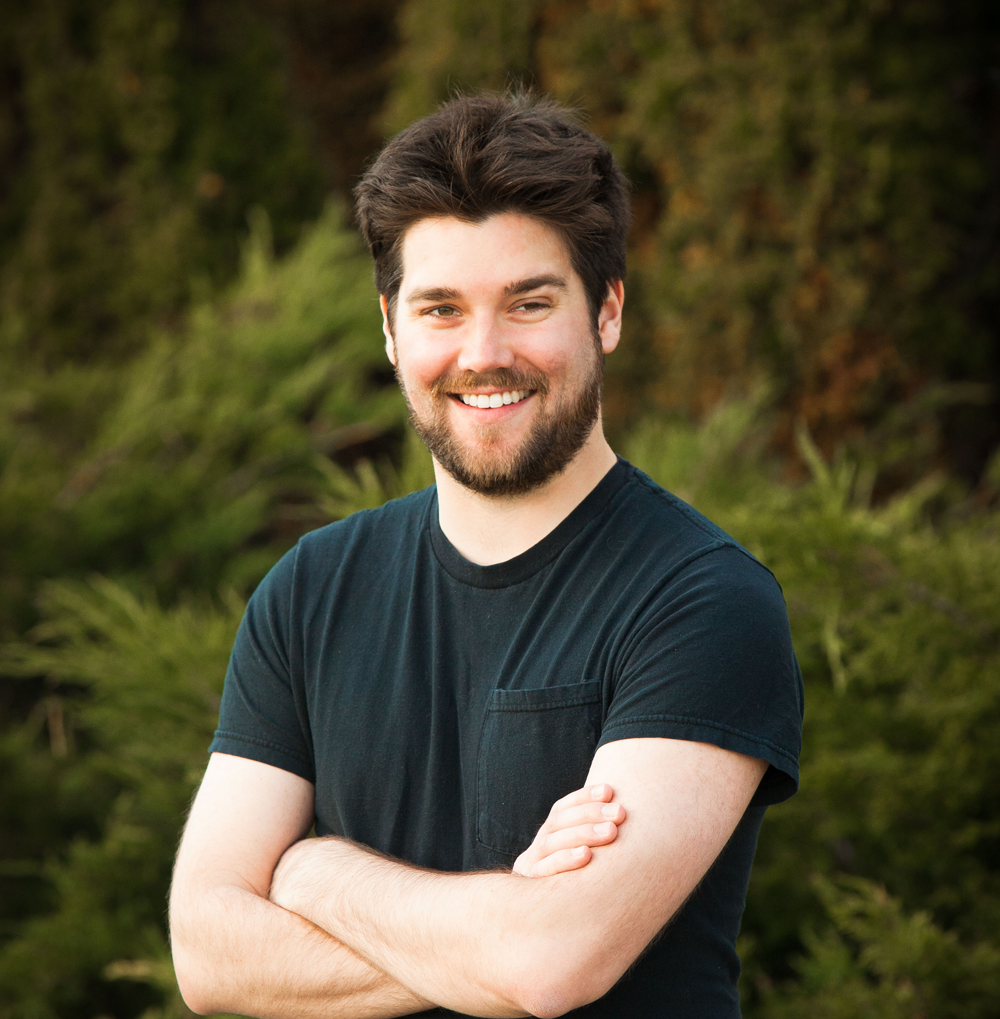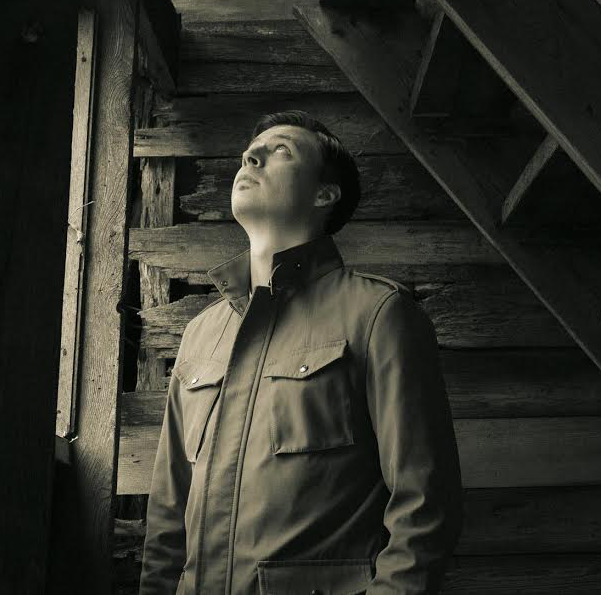


Story by Jordan Wiklund / Illustration by Andres Guzman / Photography by Wes Eisenhauer
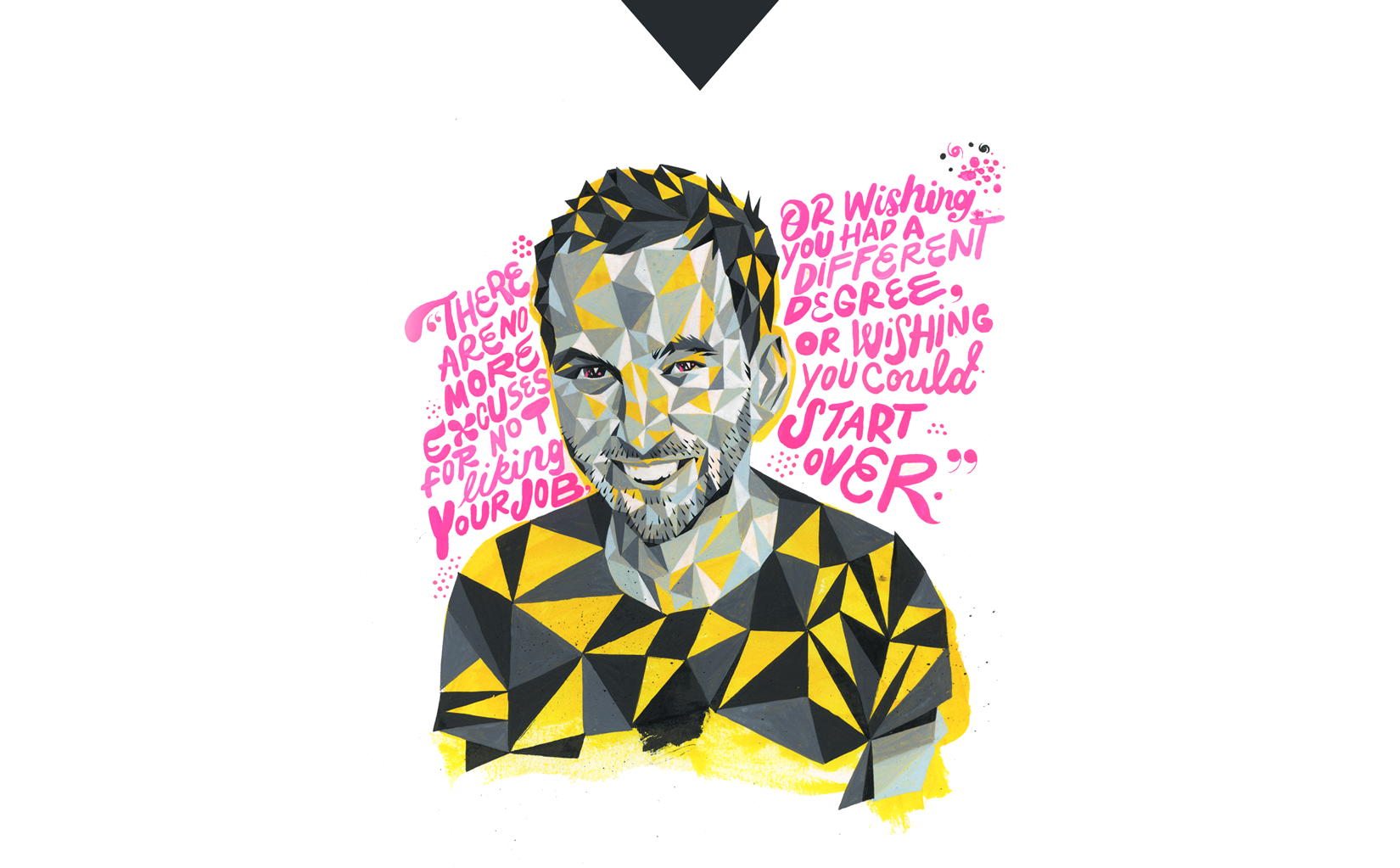
“There are no more excuses for not liking your job, wishing you had a different degree, or wishing you could start over.”
He pauses.
“It’s all right there at your fingertips.”
John Meyer is the CEO of Lemonly, a small company in Sioux Falls, South Dakota, that specializes in custom infographics for clients large and small. He is tall, quick to laugh, flashes an easy smile. And why not? He’s newly married, with a new house.
He’s in a place he loves. And he’s doing what he loves.
The Internet is the Internet–it’s not a West Coast Internet, nor an East Coast Internet, not even an Internet divided by the Western and Eastern worlds. It’s a fluid, evolving presence. It hums in your pocket; it talks to you in your car. It’s on your wristwatch, in your wallet. Who benefits from a medium like this?
“Midwesterners,” John says.
In John Meyer’s Midwest, any place can become a wellspring of opportunity.
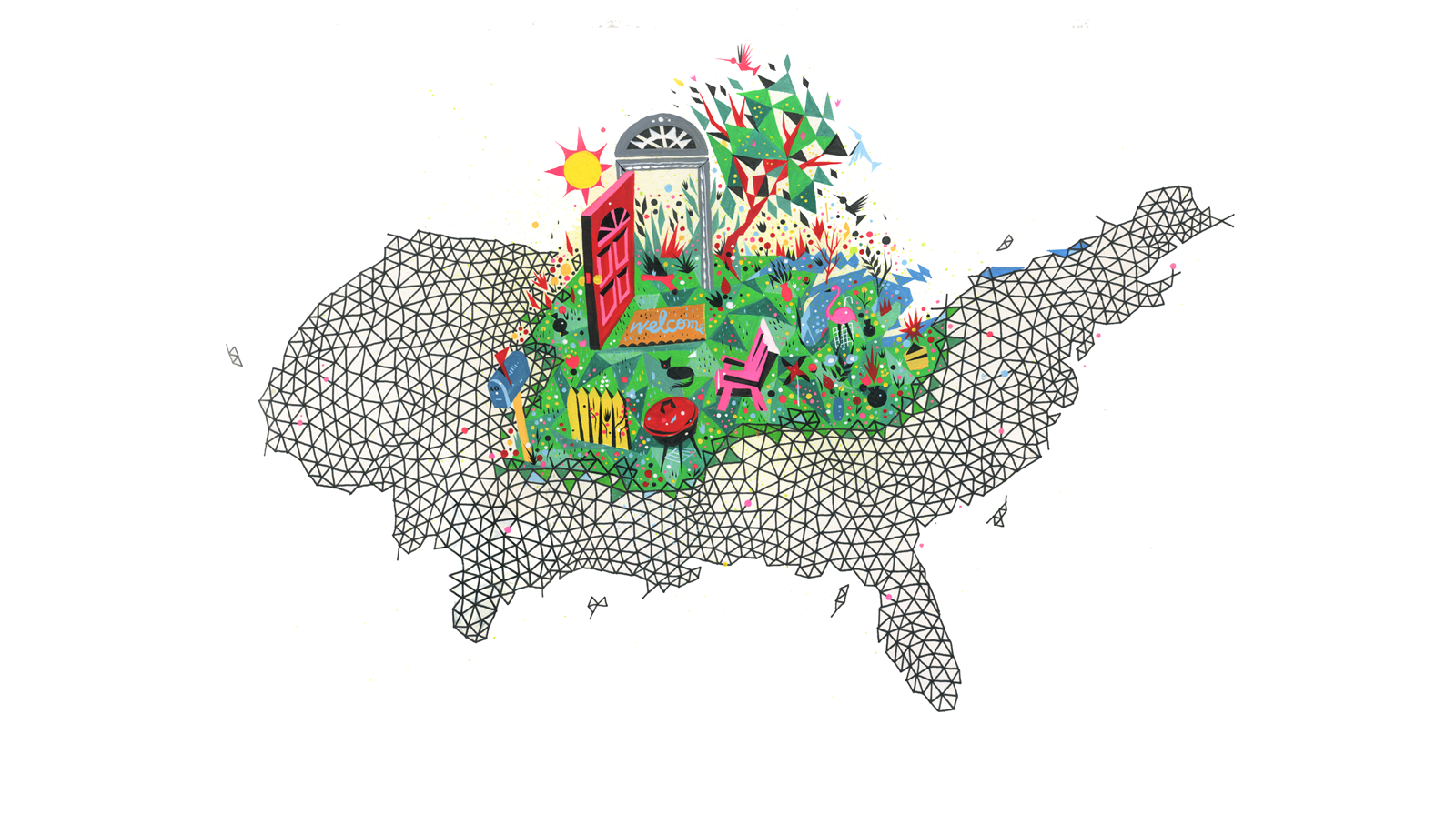
In 2009, Meyer worked as an analyst at a consulting company in Minneapolis. There, he experienced the traditional corporate world, the one where progress is slow, risks are minimized, and employees sip bad coffee in tired kitchens. Cloying for something better, he soon learned of what he describes as “a way out.” It was a grant application from N2TEC Institute, based in California. The prize–$15,000. The caveat–had to be tech. Had to be new. Had to be in South Dakota. He called his brother, Scott, who at the time was working in Norway. Was he interested?
He was. For the grant, they interviewed over Skype with the program officer in California, while John sat in the Midwest and Scott huddled over a computer at his apartment in Norway.
It went well. And after that, John says, “it was off to the races.”
They moved to Sioux Falls and started 9 Clouds, a digital marketing company.
They did well. 9 Clouds was succeeding. But in a digital landscape that shifts as quickly as the wind across the prairie, it wasn’t enough.

Among the digital flotsam of the Internet, John was able to see something emerging. A new medium in a new medium. Three years ago at 9 Clouds, John created his first profitable infographic. “We saw crazy returns, which was great. We did it again, and saw a better return, and good analytics. I told Scott we should start a company that just did infographics.”
John moved on from 9 Clouds. He took what he had learned and formed Lemonly.
The average attention span is 8 seconds or less. Infographics grab your attention because they’re attractive and engaging. But you also retain the information. In just a few years, Lemonly has made over 700 infographics for clients large and small, including Major League Baseball, the Grammys, Trojan Condoms, and more. Over time, John has steered Lemonly into one of the most successful, most visible, and downright most fun visual marketing firms around. They’ve come a long way since that $15,000 jump-start. How does that figure look now?
$15,000 doesn’t even cover a week of payroll.
“Nearly everything can scale with the Internet.” He pauses, musing. “Anyone can benefit from the Internet. Maybe Midwesterns are more poised to embrace it because, well, maybe we are a little behind.”
John believes that by being in the Midwest—embracing the idea of being behind the East Coast, the West Coast, being behind the tech, the fashion, the Wall Streets, and the Hollywood Boulevards—is an advantage. From Minneapolis to South Dakota, from 9 Clouds to Lemonly, John has found the Midwest affords him more time and opportunity to succeed, and maybe even more license to fail and try again. “Failure gets a little too glorified, sometimes,” he says. “It is okay not to be the first one to tackle a problem, but you have to learn from others’ mistakes. One thing about being a little bit behind is we can see how things are playing out in other markets and adjust a little bit.” John is not trying to replicate the success or strategies built for other regions or companies. He is interested in building in a way that makes sense for his singular company and for the geographic limitations and opportunities of the Midwest.
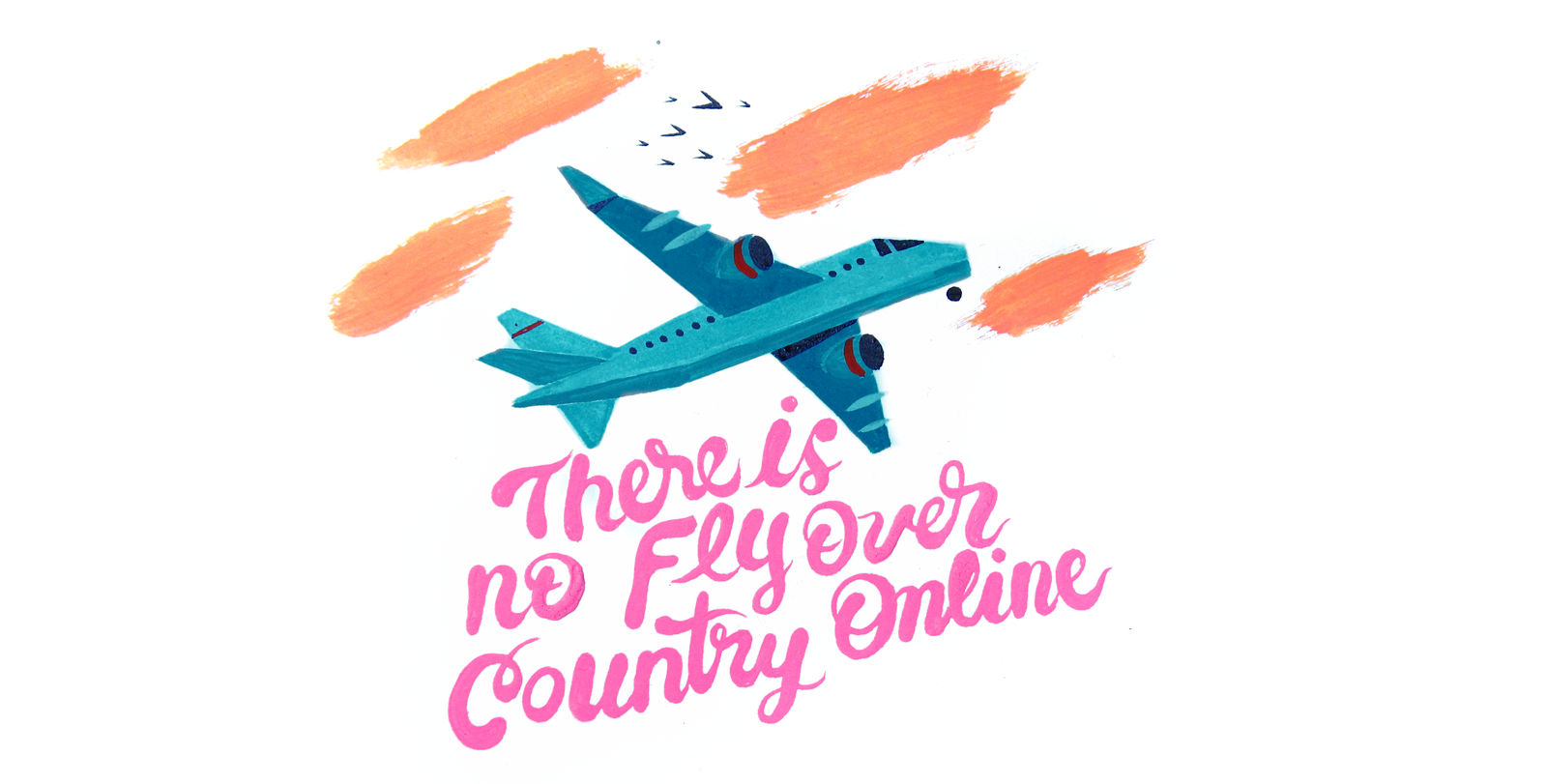
Yes, behind is a loaded word, but there is no flyover country online. And it’s hard to cast 21st-century entrepreneurialism as a primarily digital concept, because you can be successful anywhere. In a digital landscape loaded with competitors, imitators, and thieves, you can cut to the quick pretty well when your content is simply better or more engaging than those fighting for the same turf. It’s a capitalistic, distinctly American approach to business. But John employs a little non-connected, pre-digital practice in his business approach; Lemonly clients and partners get a Midwestern favorite—lemon bars—at the beginning of every project. The treat is more appropriate than most clients know. There is a species of lemon known as the Meyer. They are not widely available, yet are more resistant to frost than most.
For this northern company, and in this competitive digital culture, thick skin goes a long way.

Another South Dakota entrepreneur said it well. “If enough people think of a thing and work hard enough at it,” wrote Laura Ingalls Wilder over 100 years ago, “I guess it’s pretty nearly bound to happen, wind and weather permitting.” And the weather does permit—when the wind howls across the South Dakota prairie, and the snow and ice force residents inside, you have time to plan and produce, connect and build. “In Sioux Falls,” John says, “whether you are trying to build a company like Lemonly or join the startup ecosystem in general, you will find it is a big-fish-in-a-small-pond situation.”
In order to build though, John needs a few more big fish. “I have always said that we have people as talented here as you can find in San Francisco or New York, just maybe not as much talent.” Lemonly has 17 employees, and John thinks he can get that number to 25. For John, being big isn’t necessarily the goal, though. Being efficient, responsive, nimble, and adaptable may be more beneficial in the long run. He’ll need more people soon, and getting to fifty, sixty, or seventy employees does concern him.

John has realized that maybe the best thing he can do for Sioux Falls is build a great company. He wants to attract talent back to Sioux Falls and put it on the map. There are many ways to try and move a community forward. John has found his. He aims to double down on Lemonly to further help impact and support the city he loves.

John has rooted himself to the prairie, and won’t look back.
No more excuses.
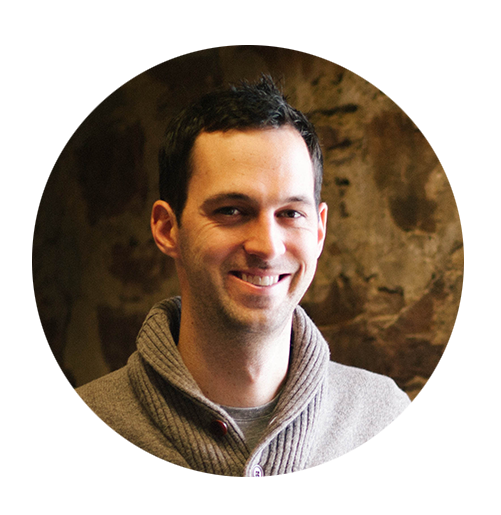
“You can’t always be talking about the future, you need to build the future.”

Contributors
